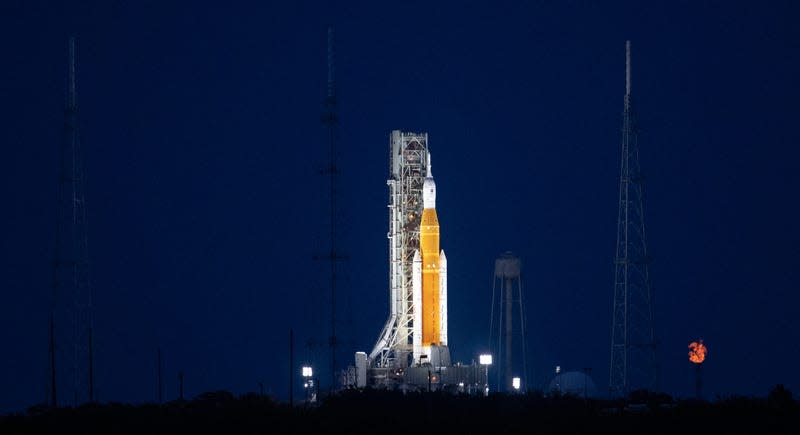Artemis 1, finally, took off for the Moon

It didn’t go off without a hitch, but Artemis 1 is on its way to the Moon.
Early this morning, the NASA test mission launched an uncrewed Orion space capsule to orbit the Moon on a three-week mission and survive a fiery return to Earth, paving the way to return humans to the lunar surface.
Read more
Getting there requires the Boeing-built Space Launch System (SLS) rocket to lift off from Cape Canaveral. The most powerful operational rocket in the world has proven a finicky beast, which faced delays due to tropical storms and seen two previous launch attempts canceled due to problems loading super-chilled hydrogen and oxygen propellants.
This time around, yet another hydrogen leak forced NASA to send a “red team” to the infrastructure at the base of the rocket mid-countdown to tighten up a leaking fixture. That’s a hazardous operation, given the thousands of pounds of flammable liquids already loaded into the rocket. Then, an ethernet switch had to be replaced at a radar station that tracks the rocket so the US Space Force can destroy it if it veers dangerously off course.
In the end, the rocket took flight at 1:47am EST.
What is NASA’s Artemis program?
NASA has spent more than $90 billion developing the vehicles for the Artemis missions, which begin with this uncrewed fly-by. The most important objective is testing the Lockheed Martin-built heat shield which protects Orion when it re-enters Earth’s atmosphere. The vehicle will be going 24,500 mph, or about 32 times the speed of sound; hitting the atmosphere at this speed will generate about half the heat of the sun. There’s no way to replicate those conditions on Earth, hence this mission.
Future Artemis missions will send a crew to orbit the Moon and then actually land astronauts, expected to be the first woman and first person of color on the Moon. That mission is penciled in for 2026, but more likely in 2028. A range of private companies are involved in the mission, with SpaceX building a lunar lander and other firms sending robots to the Moon for the space agency.
Returning to the Moon is an American megaproject driven by factors ranging from scientific curiosity to realpolitik. Unlike the Apollo mission, the Artemis program is mooted to provide longer stays on the lunar surface to explore deposits of water ice and exploit them. Researchers are eager to learn more about the history of the solar system from the Moon’s geology. And strategists fret about China’s space program potentially outreaching the US.
This launch just the beginning of the mission, which will only be complete when the Orion capsule splashes down safely in the Pacific ocean. But after more than a decade of work by scientists and engineers, the start of a new generation of deep space exploration also promises to open a new economic frontier.
More from Quartz
Sign up for Quartz's Newsletter. For the latest news, Facebook, Twitter and Instagram.


